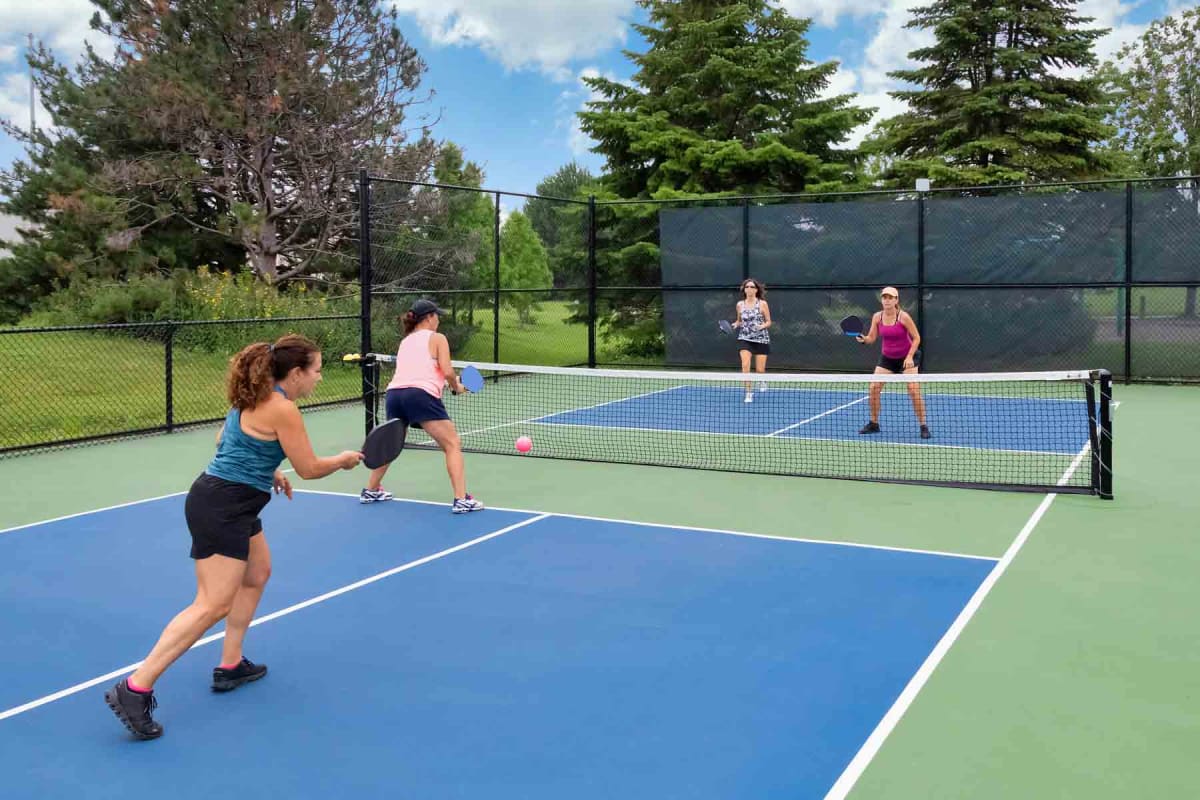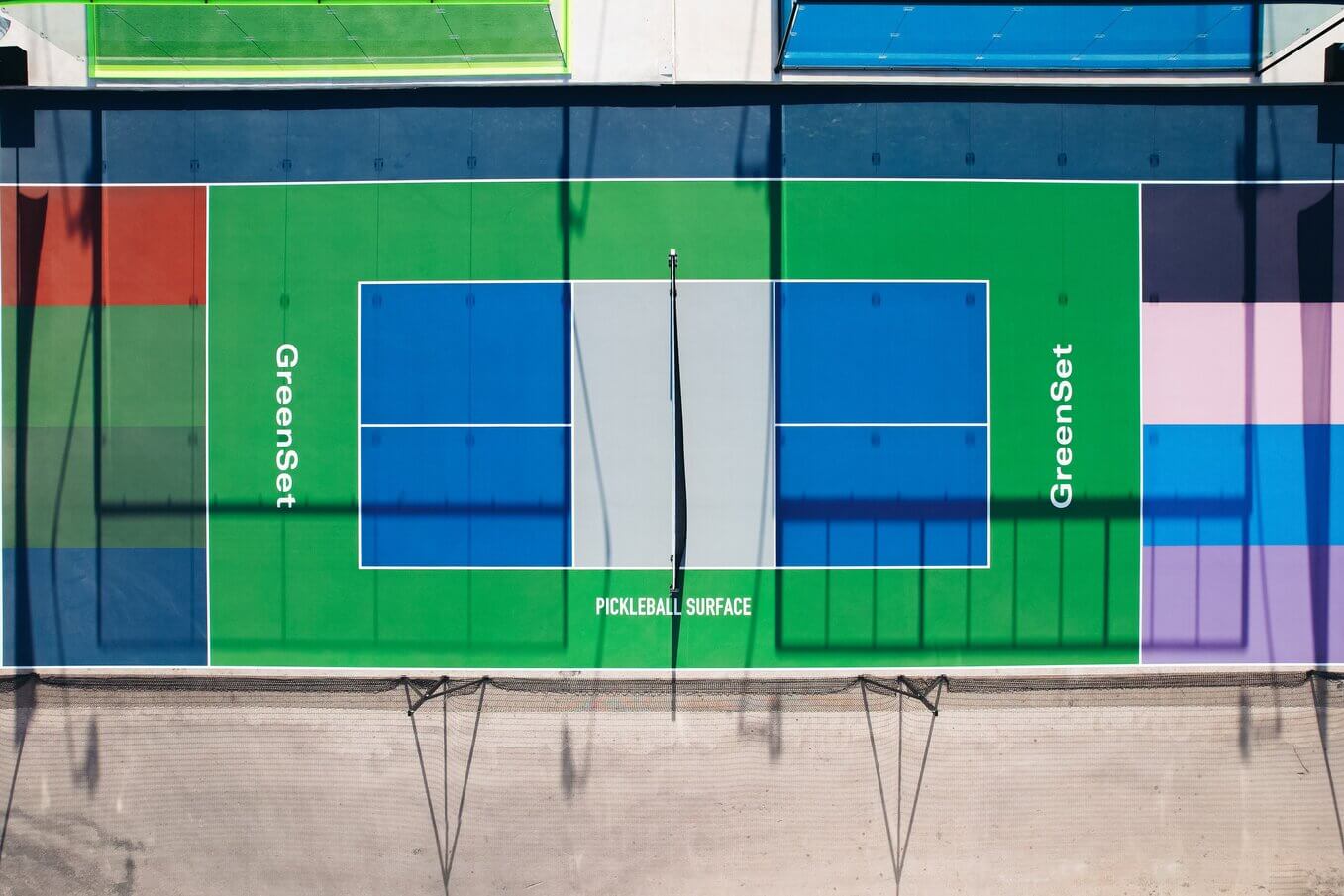Budget-friendly Pickleball Court Construction for Residences and Communities
Budget-friendly Pickleball Court Construction for Residences and Communities
Blog Article
Sustainable Practices in Pickleball Court Building You Must Know
As the appeal of pickleball continues to increase, so as well does the demand for lasting methods in court building. This technique not just addresses environmental concerns yet additionally boosts the long life and performance of the courts. From choosing environmentally friendly products to carrying out effective drainage and energy-saving lights options, there are various methods to think about. Yet, the effect of these techniques prolongs much past the court itself. Understanding just how each aspect contributes to a much more lasting future invites additionally expedition into the intricate balance between entertainment growth and environmental stewardship.
Picking Eco-Friendly Materials
Choosing environment-friendly materials is a vital action in the construction of lasting pickleball courts. The selection of lasting materials not just reduces environmental effect however likewise improves the durability and performance of the court. Key materials consist of reused rubber for the surface area, which uses superb resilience and shock absorption while diverting waste from landfills.
Additionally, utilizing in your area sourced products minimizes transportation emissions and sustains local economic situations. Pickleball court construction. For instance, using indigenous woods for fencing and seats can supply a sustainable visual while making sure durability against the aspects.
Integrating absorptive materials for court structures can even more add to sustainability by permitting natural water drain and decreasing drainage. These choices not just protect regional communities however also advertise healthier play environments.
Effective Water Drainage Solutions
While the selection of green products is important, carrying out reliable water drainage solutions is similarly essential for maintaining sustainable pickleball courts. Proper drainage not only safeguards the court surface area from water damages but likewise reduces erosion and runoff, promoting ecological integrity.
Effective drainage systems can consist of absorptive paving, which permits water to infiltrate the ground rather than merging on the surface area. This lowers the likelihood of standing water, which can lead to mold and mildew and other upkeep problems. Additionally, incorporating strategically positioned drainage networks and swales can guide excess water away from the court location, making sure a dry having fun surface and preventing dirt disintegration.
Utilizing indigenous plants in the landscaping around the courts can better improve drainage by taking in excess water and decreasing drainage. These plants require less watering and promote biodiversity, aligning with sustainable techniques.
Furthermore, it is essential to on a regular basis maintain the drain system to ensure its long-lasting efficiency. This consists of clearing debris and surveillance for blockages. By focusing on reliable water drainage services, pickleball court constructors can considerably add to the sustainability and long life of the center, inevitably profiting both gamers and the atmosphere.
Energy-Efficient Lighting Options
As the need for pickleball remains to grow, incorporating energy-efficient lights options right into court layout has become progressively vital for sustainability. Traditional illumination systems often consume excessive power, adding to higher visit their website functional expenses and environmental effect. Adopting modern-day, energy-efficient innovations is vital for both new constructions and renovations.
LED (Light Emitting Diode) lights sticks out as a premier selection as a result of its durability and energy financial savings (Pickleball court construction). Compared to standard lighting, LEDs make use of about 75% much less power and can last as much as 25 times much longer, substantially decreasing upkeep costs. Moreover, the directional nature of LED lights reduces light pollution, making sure that illumination is focused on the court instead of bordering locations.
Lasting Surface Area Alternatives
Checking out sustainable surface area choices for pickleball courts has actually acquired traction amongst players and contractors alike. The emphasis on eco-friendly materials not just aligns with the growing ecological recognition yet additionally boosts the efficiency and toughness of the courts.
One prominent option is making use of recycled rubber, which can be sourced from used tires. This product gives exceptional shock absorption, reducing the risk of injuries for players while promoting sustainability. In addition, modular ceramic tiles made from recycled plastics use another feasible option. These tiles are very easy to change and install, and their adaptability permits various court arrangements.
All-natural grass courts are also becoming a sustainable option, advertising biodiversity and lowering the warmth island effect. Nevertheless, they need routine maintenance and water, which may not line up with all sustainability goals.

Water Preservation Strategies

An additional effective strategy includes the setup of rain harvesting systems. These systems gather and save rainwater for usage in maintaining court surface areas and landscape design. This approach not just preserves drinkable water yet also minimizes dependence on local resources.
In addition, utilizing drought-resistant landscape design around the courts is important. Native plants need much less water and are much better adjusted to neighborhood climate problems, thus decreasing general water usage. In addition, making use of reliable watering systems, such as drip watering, guarantees that water is delivered directly to plant roots, reducing evaporation and waste.
Final Thought
Including sustainable techniques in pickleball court construction substantially adds to environmental preservation and resource effectiveness. By focusing on these practices, the construction of pickleball courts can align with more comprehensive ecological goals while promoting long life and performance within neighborhoods.
As the appeal of pickleball continues to climb, so as well does the need for lasting practices in court construction.Choosing green materials is a crucial action in the building and construction of sustainable pickleball courts. By focusing on energy-efficient lighting alternatives, pickleball court contractors can add to a much more lasting future while meeting the demands of players and stakeholders alike.Incorporating lasting surface alternatives not only improves the efficiency of pickleball courts yet also leads the method for applying effective water preservation methods.Incorporating sustainable methods in pickleball court building significantly adds to ecological conservation and source effectiveness.
Report this page